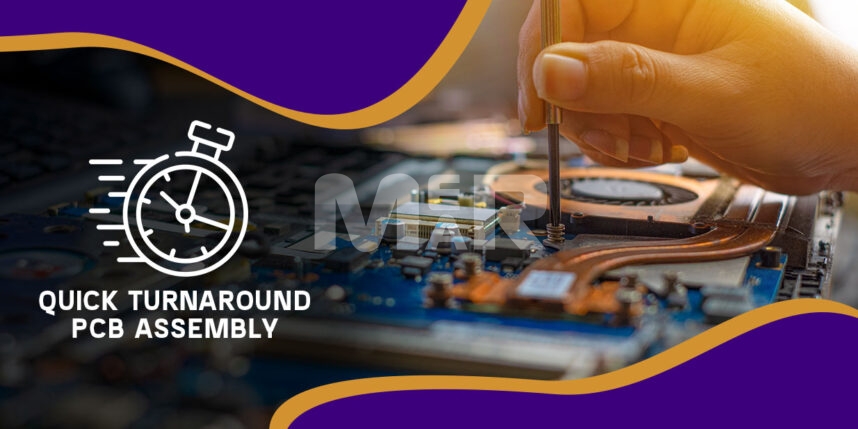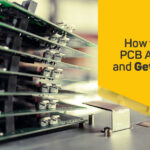Simple tweaks to get a Quick Turnaround PCB Assembly Without Sacrificing Quality!

Quick time to market is definitely a big source of competitive advantage as it helps garner market share. What is equally important though is to ensure that quality and performance are not sacrificed at the altar of speed when it comes to quick turnaround PCB assembly.
The good news here is that speed and quality are not always inversely proportional. In fact, if the quality of the design is optimized and design for manufacturing best practices are followed, the time taken to spin the board significantly decreases. In addition to the design quality, the following best practices also ensure that both speed and quality are maintained.
YOU MAY ALSO LIKE: PCB Company & its Quality Control Methods
Best practice to get a quick-turnaround PCB assembly without sacrificing performance!
1. Communication
This is the single most important factor when it comes to quick turnaround PCB assembly. There needs to be enough communication between the design team and the contract manufacturer. In the absence of proper communication, the design team can easily miss the following:
- Manufacturer’s capabilities
- Component availability since necessary components are sometimes unavailable due to shortages and obsolescence.
- Lead time, and more.
Proper communication can ensure what the components are available as also what are the DFM (design for manufacturing) requirements. If these requirements are neglected, it can lead to redesign that will waste precious time and increase assembly lead time.
While simpler designs can make it through the PCB manufacturing process without extensive communication, when it comes to complex designs particularly, you certainly need to have robust communication that will keep the yield high. It is also important to remember that designs that need non-standard fabrication technology typically require increased manufacturing time. Additionally, such designs may also lead to an increase in cost on account of the wastage involved.
2. Have a fair idea of the assembler’s capabilities
Intricately linked to the above point is the fact that you need to be aware of the assembler’s capabilities. For example, following are some of the aspects you need to be aware of when it comes to whether the assembler can accommodate your PCB design choices:
- Spacing between thermal vias in the thermal pad
- Use of thermal reliefs
- Silkscreen placement
- Solder mask thickness
In fact, an experienced PCB manufacturer will be able to study the design requirements in detail and spot any design choices that you may have made that can reduce yield. If an inexperienced manufacturer puts the design directly into production without figuring out these design choices that you have made, you will tend to waste time and there will be expensive reworks. Conversely, if you know the manufacturer’s capabilities you can also spot the design issues and ensure there is quick turnaround time. While design reviews could mean spending additional time, they will overall expedite the entire process as once the design issues are spotted the rest of the process will be seamless. The key to ensuring quick turnaround PCB assembly is also that these issues are anticipated early through proper communication.
3. Order Size
One other aspect that you need to be mindful of is the order size. You need to ensure that the manufacturer can accommodate your schedule and order size. Typically professional manufacturers offer both high and low volume PCB manufacturing that ensures that the boards can be quickly put into production. However, if you do not have a fair idea of the volumes that the contract manufacturer can handle, you may land up in a position where you overload them, and they are unable to fulfil your requirements within the timeframe expected by you.
4. Testing Requirements
At the outset, you need to make sure that you have detailed your testing requirements to the manufacturer. Some contract manufacturers may only offer a bare board test, where the manufactured board is compared to the original Gerber data. However you may want to also send a netlist along with the Gerber data. In fact a schematic netlist can be used to compare the Gerber data. This comparison is best performed before manufacturing. The big advantage is, it offers that the contract manufacturer can catch any discrepancies early as opposed to figuring them out once the final assembly is done.
These apparently simple hacks can go a long way in both ensuring quality as well as the speed for your PCB Assembly.
As a leading quick turn PCB manufacturer in the USA, Mer-Mar Electronics provides well-rounded quick turn PCB assembly at the fastest turnaround times without sacrificing quality. We are ISO 9001:2015 certified and committed to constantly improving our processes and operations for delivering sophisticated and superior quality PCBs to our clients. We have been maintaining global quality standards throughout all the phases of the PCB assembly operations by performing rigorous checks, analysis, and inspections.
If you have any queries regarding our quick turn PCB assembly or need urgent assistance, Request a quick turn PCB assembly quote.








